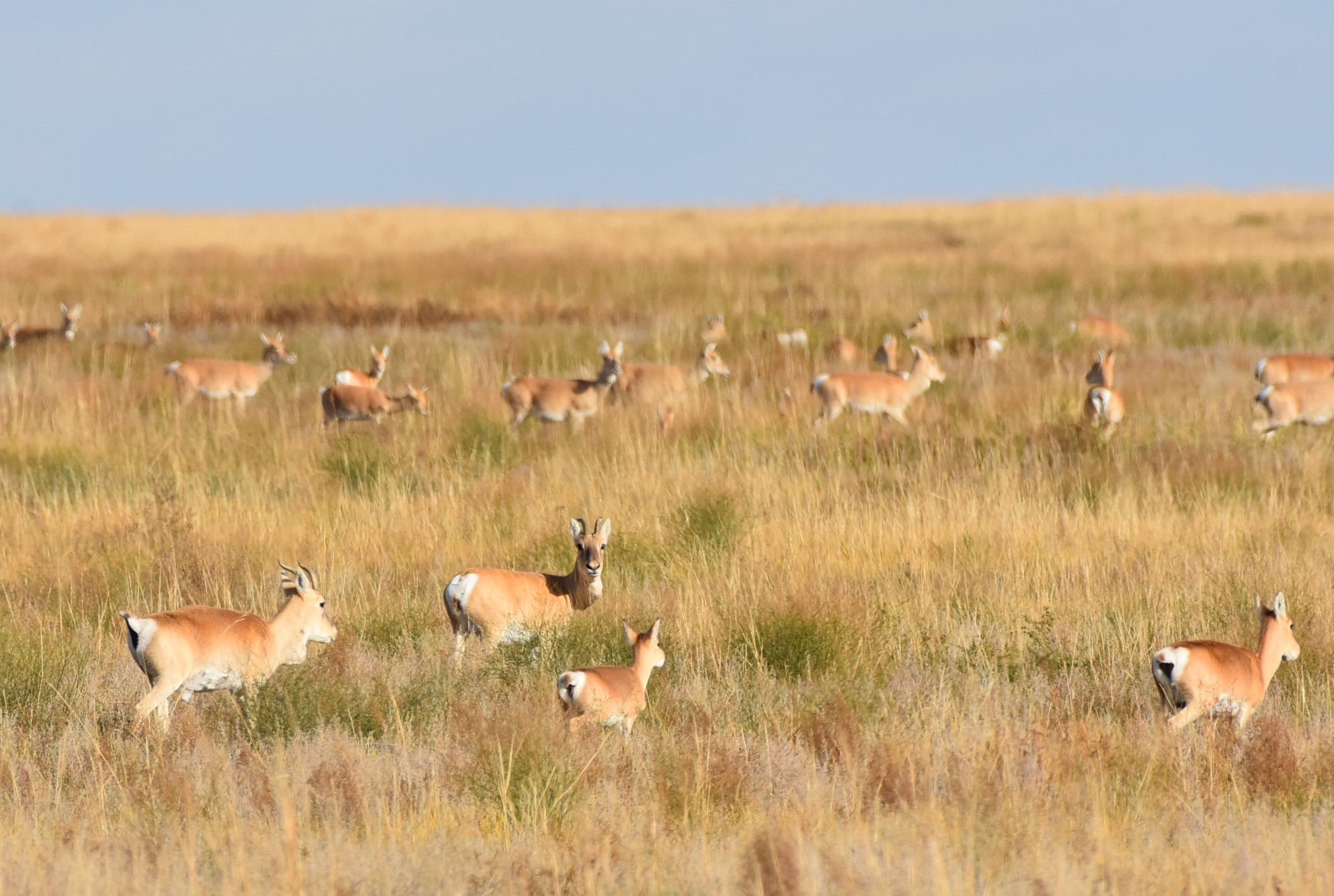Ulaanbaatar, April 26, 2024 — A new publication in FirstView in Oryx sheds light on the status of Mongolian gazelle populations across Mongolia, Russia, and China, revealing both successes and challenges in the conservation efforts of this iconic species
Led by a team of dedicated researchers, the study provides the first global population estimates and highlights the threats facing gazelles in their range states.
The study presents the first nearly range-wide estimate of Mongolian gazelle populations obtained from ground-based surveys across Mongolia and Russia, supplemented with anecdotal accounts of their status in China. The findings underscore Mongolia’s crucial role as a stronghold for gazelles, hosting approximately 99 percent of the global population, estimated at around 2.14 million individuals. These results reveal that Mongolian gazelle are one of the most numerous open-plain ungulates on the planet.
However, amidst Mongolia’s rapid development increasing linear infrastructure development, expanding livestock numbers, habitat degradation, and disease spillover pose significant challenges to the species’ survival.
Dr. Bayarbaatar Buuveibaatar (Buuvei), WCS Mongolia Senior Scientist and lead author of the study, stresses the importance of adopting comprehensive management strategies to mitigate these threats and preserve gazelle populations. “With the vast population size and extensive range of gazelles in Mongolia, a broad range of management options remain viable,” said Dr. Buuvei “It is imperative that we dedicate resources to maintain and potentially enhance their current status.”
“Globally, these vast herds of Mongolian gazelle that still roam the Mongolian steppe are a unique phenomenon, the sheer size of the herds and their long-distance movements are unique” Tserendeleg Dashpurev, Director of Hustai National Park said.
“While Mongolian gazelles are still abundant in the Mongolian steppe, the construction of new railroads threatens to dissect the vast open landscape into several parts,” wildlife ecologist Nandintsetseg Dejid of the Senckenberg Biodiversity and Climate Research Centre (SBiK-F) in Germany and a co-author of this study says. “If the new railroads are fenced without sufficient wildlife crossing structures, the Mongolian gazelle population could collapse and the largest remaining nomadic system on Earth could be in danger,” she says. “With 2 million Mongolian gazelles, thousands of nomadic people, and millions of livestock at risk, the government of Mongolia and all stakeholders to consider carefully the full ecological and economic benefits of building the new railways. It’s essential to ensure that the new railways provide sufficient wildlife crossing structures to avoid a dramatic decline in population abundance of Mongolian gazelles in the steppe,” Dejid says.
Galsandorj Naranbaatar, a co-author and researcher at the Institute of Biology, Mongolian Academy of Sciences, emphasizes “the need for collaborative efforts among range countries to establish a unified approach, including the implementation of a standardized survey protocol for monitoring gazelle populations. Such initiatives are pivotal in guiding transboundary conservation efforts aimed at preserving this majestic species.”
The ecosystem services they provide include redistributing nutrients as they traverse landscapes, sustaining forage diversity, and serving as prey for predators. Culturally and economically significant, they have been hunted by rural populations for subsistence, and their presence on the steppes instills pride while also offering income opportunities through eco-tourism.
The publication recommends the development and implementation of a comprehensive species management plan across the entirety of the gazelle’s range. This proactive approach would address the multifaceted challenges facing gazelle populations and secure their long-term viability.
The findings presented in Oryx represent a clarion call for action, urging stakeholders to collaborate and implement targeted conservation strategies to protect gazelles and their habitats. WCS Mongolia along with partners are currently working in Eastern Mongolia to safeguard the species. The team is monitoring the status and movement of Mongolian gazelles – gaining a clear understanding of their nomadic routes and key important routes to safeguard. We are also working with an inter-ministry working group – including the Ministry of Environment and Tourism, and the Ministry of Road and Transport Development – and have created standards for railways and fencing.
Said Dr. Justine Shanti Alexander, WCS Mongolia Country Director: “We are committed to working with partners to protecting the Mongolian gazelle and Mongolia’s intact grasslands. This study highlights more than ever the need to ensure connectivity of these flagship species.”
###
Wildlife Conservation Society
WCS combines the power of its zoos and an aquarium in New York City and a Global Conservation Program in more than 50 countries to achieve its mission to save wildlife and wild places. WCS runs the world’s largest conservation field program, protecting more than 50 percent of Earth’s known biodiversity; in partnership with governments, Indigenous People, Local Communities, and the private sector. It’s four zoos and aquarium (the Bronx Zoo, Central Park Zoo, Queens Zoo, Prospect Park Zoo, and the New York Aquarium ) welcome more than 3.5 million visitors each year, inspiring generations to care for nature. Visit: newsroom.wcs.org. Follow: @WCSNewsroom. For more information: +1 (347) 840-1242. Listen to the WCS Wild Audio podcast HERE.
